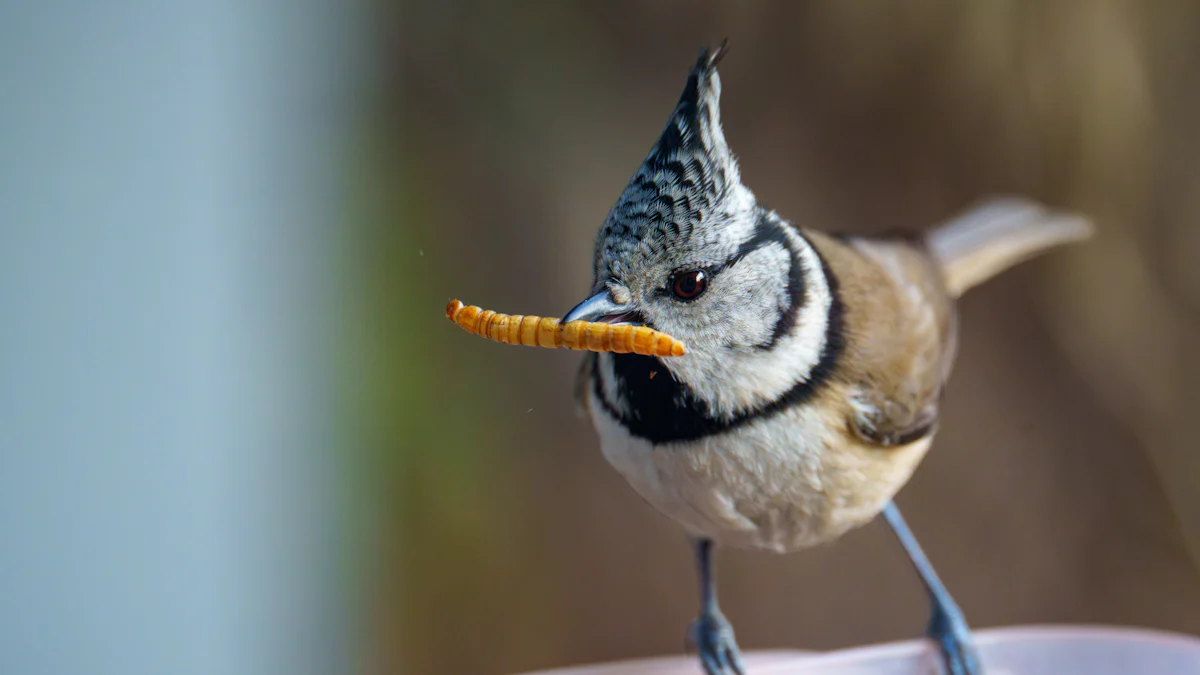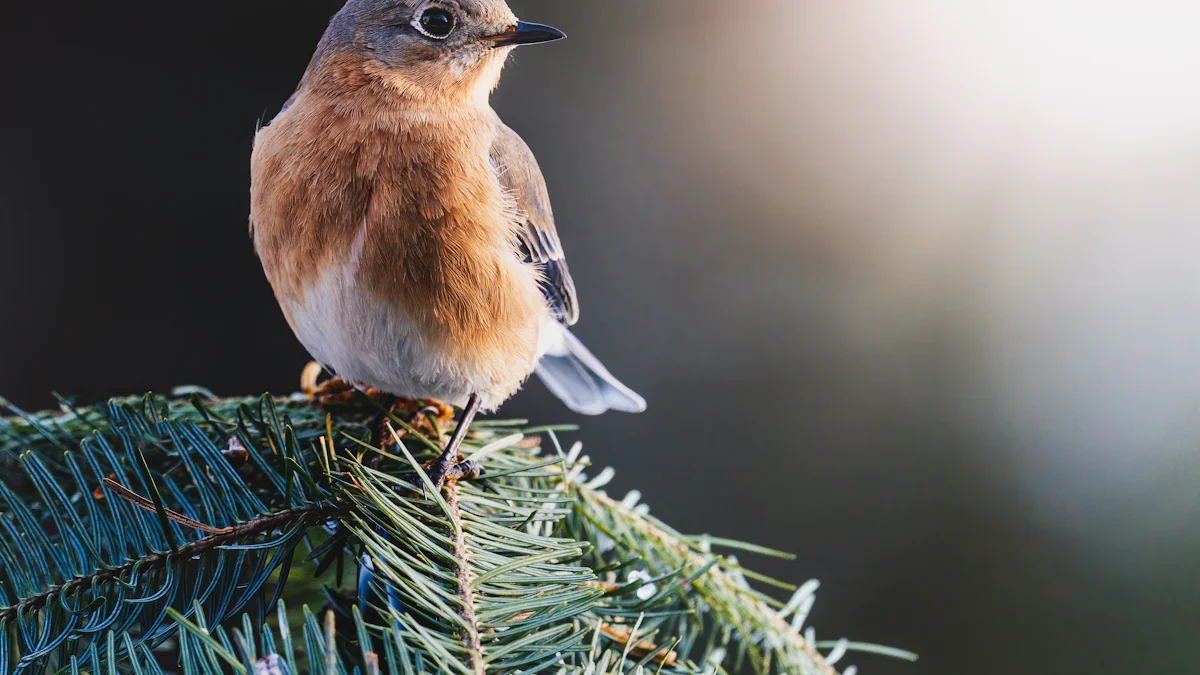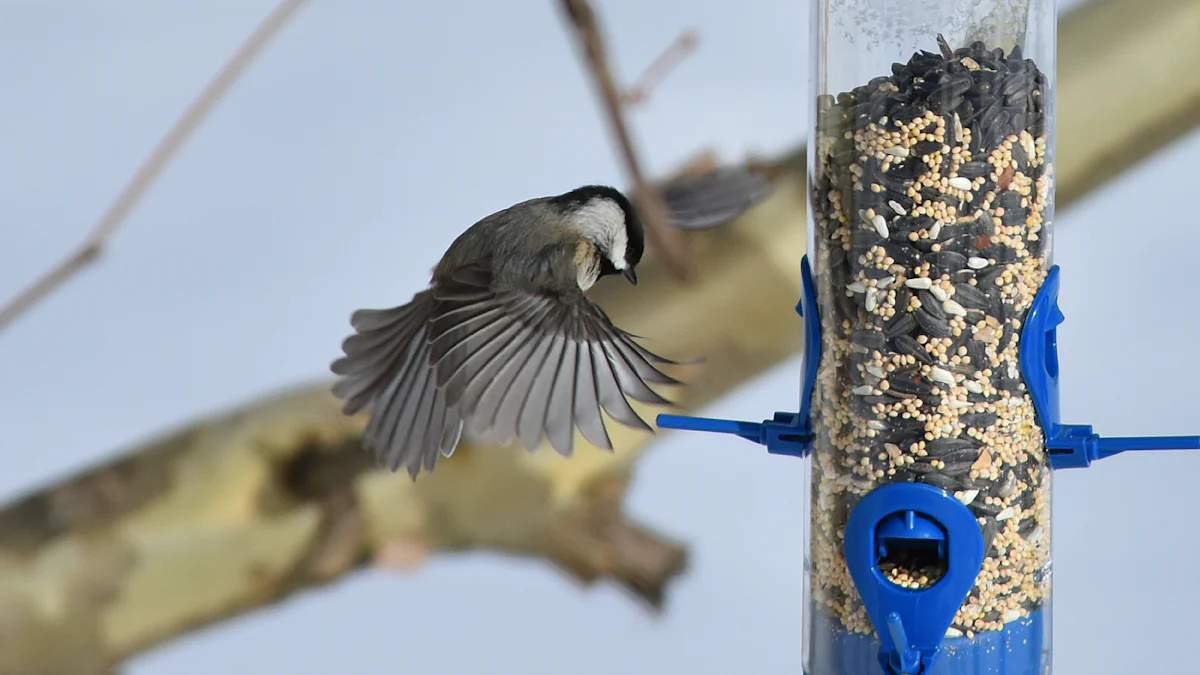
Have you ever noticed how birds seem to gobble up mealworms like candy? They’ll eat as many as you give them, but too much of a good thing can be harmful. Overfeeding mealworms for birds can lead to serious health problems. Birds might become obese or suffer from digestive issues like crop impaction or gastrointestinal blockages. Without enough fiber, their overall health takes a hit. That’s why I always recommend keeping mealworms as just one part of their diet. For most backyard feeders, offering around 100 worms a day is plenty.
Key Takeaways
- Give birds about 100 mealworms daily to avoid weight gain.
- Mix mealworms with seeds, fruits, and veggies for balance.
- Watch birds closely to change their food if needed.
Why Too Many Mealworms for Birds Can Be Harmful

Nutritional Imbalance from Overfeeding
Birds will guzzle down mealworms and eat as many as you offer them. But they shouldn’t have too many, and they should be just part of your feeding. So for most people, putting out around 100 worms a day should be sufficient. Overfeeding mealworms for birds can cause serious problems. These little larvae are high in fat but lack fiber, which birds need for healthy digestion. Without enough fiber, birds can develop issues like crop impaction or even gastrointestinal blockages. I’ve seen this happen with species that rely on a more varied diet, like those that eat fruits, grains, and seeds.
Another thing to watch out for is the quality of the mealworms you’re offering. Poor-quality mealworms can carry harmful bacteria like Salmonella, which can make birds very sick. It’s always a good idea to buy from a trusted source to avoid introducing pathogens or parasites into their diet.
Calcium Deficiency and Its Effects on Birds
Too many mealworms can also lead to calcium deficiency. This happens because mealworms don’t provide enough calcium to balance out their phosphorus content. Birds need calcium for strong bones and overall health. Without it, they can suffer from weak bones or even fractures. For egg-laying birds, the effects are even worse. Calcium deficiency can weaken their muscles and nerves, causing poor coordination or muscle tremors. In severe cases, it can lead to egg-binding, which is life-threatening. Chronic deficiency can shorten a bird’s lifespan and harm its overall health.
Dependency on Mealworms and Reduced Foraging
Feeding birds too many mealworms can also change their natural behavior. I’ve read that the Audubon Society warns against this because it can make birds dependent on human-provided food. When birds rely too much on mealworms, they stop foraging for their natural diet. This shift can harm their instincts and make them less adaptable to changes in their environment. Feeding practices should support their natural habits, not replace them. I always remind myself that mealworms for birds should be a treat, not their main meal.
How to Feed Mealworms for Birds Responsibly
Balancing Mealworms with Other Foods
Mealworms are like candy for birds—delicious but not a complete meal. I always remind myself that mealworms for birds should be a treat, not their main course. To keep their diet balanced, I mix mealworms with other nutritious foods. Here’s what I usually include:
- Seeds and nuts, like sunflower hearts and peanuts, for healthy fats and energy.
- Suet cakes or balls, which are great for an extra energy boost.
- Fresh fruits, such as apples or berries, for essential vitamins.
- Black sunflower seeds, which provide protein.
This variety ensures birds get the nutrients they need to stay healthy and active. A balanced diet supports their energy levels and overall well-being. I’ve found that offering a mix of foods also attracts a wider range of bird species to my feeder.
Incorporating Calcium-Rich Foods
Since mealworms lack calcium, I like to pair them with calcium-rich foods. Birds need calcium for strong bones, healthy eggs, and proper muscle function. Some of my go-to options include:
- Kale and broccoli, which are easy to chop and mix into their food.
- Almonds and chia seeds, both packed with calcium and healthy fats.
- Dandelion greens and basil, which are nutritious and easy to sprinkle on their meals.
- Figs, a sweet treat that’s high in calcium and fiber.
For breeding birds, I make sure to include even more calcium-rich greens like mustard and turnip greens. It’s also important to limit high-fat foods, as they can block calcium absorption.
Using Calcium Supplements Safely
Sometimes, natural foods aren’t enough, especially for birds with higher calcium needs. In those cases, I turn to calcium supplements. But I’m careful not to overdo it. I’ve learned that supplements should only be given 2-3 times a week to avoid overdose. The best ones include calcium, magnesium, and vitamin D3, which help birds absorb calcium effectively. I’ve had good results with products like UnRuffledRx Calcium, Magnesium +D3. Before adding any supplement, I always check with an avian vet to make sure I’m using the right amount. It’s better to be safe than sorry when it comes to their health.
Tips for Maintaining a Balanced Bird Diet

Variety of Foods to Include
When it comes to feeding birds, variety is the spice of life! I always make sure to offer a mix of foods that meet their nutritional needs. Birds need proteins for growth, fats for energy, and vitamins for overall health. Here’s what I usually include in my feeders:
- Seeds and grains like sunflower seeds and millet for quick energy.
- Fruits and vegetables such as apples, carrots, and kale for essential vitamins.
- Protein sources like cooked eggs or tofu, which are great for tissue repair.
- Pelleted diets from trusted brands like Harrison’s or Zupreem for complete nutrition.
This mix ensures birds get everything they need to thrive. I’ve noticed that offering a variety also attracts different species, which makes birdwatching even more exciting!
Seasonal Feeding Considerations
Birds’ dietary needs change with the seasons, so I adjust what I offer throughout the year. In spring, I add nectar and fruit to help them during breeding. Summer calls for mealworms for birds and crushed eggshells to support chick development. During fall migration, I focus on high-energy foods like peanuts and nut blends. Winter is all about keeping them warm, so I provide seeds rich in oils, like Nyjer and sunflower seeds.
By tailoring their diet to the season, I help them stay healthy and strong no matter the weather.
Monitoring Bird Health and Behavior
Keeping an eye on bird health is just as important as feeding them. I always watch for changes in their behavior. If they seem sluggish or stop visiting the feeder, it might mean something’s wrong. I also check for signs of malnutrition, like dull feathers or weak movements. When I notice anything unusual, I adjust their diet or consult an expert.
Feeding birds responsibly means paying attention to their needs. A balanced diet and regular monitoring go a long way in keeping them happy and healthy.
Feeding mealworms for birds can be a rewarding experience, but moderation is essential. Offering them in limited amounts helps birds stay healthy and prevents issues like calcium deficiency or dependency. A balanced diet, rich in seeds, fruits, and vegetables, ensures they thrive. By feeding responsibly, we support their well-being and encourage natural behaviors.
FAQ
Can I feed birds mealworms every day?
Yes, but keep it moderate. I usually offer mealworms daily, but only as a treat. Around 100 worms a day works well for most backyard birds.
What’s the best way to store mealworms?
I keep dried mealworms in an airtight container in a cool, dry spot. For live ones, refrigeration slows their activity and keeps them fresh longer.
How do I know if I’m overfeeding mealworms?
Watch the birds’ behavior. If they ignore other foods or seem sluggish, cut back. I also check for leftover mealworms—they shouldn’t pile up in the feeder.


